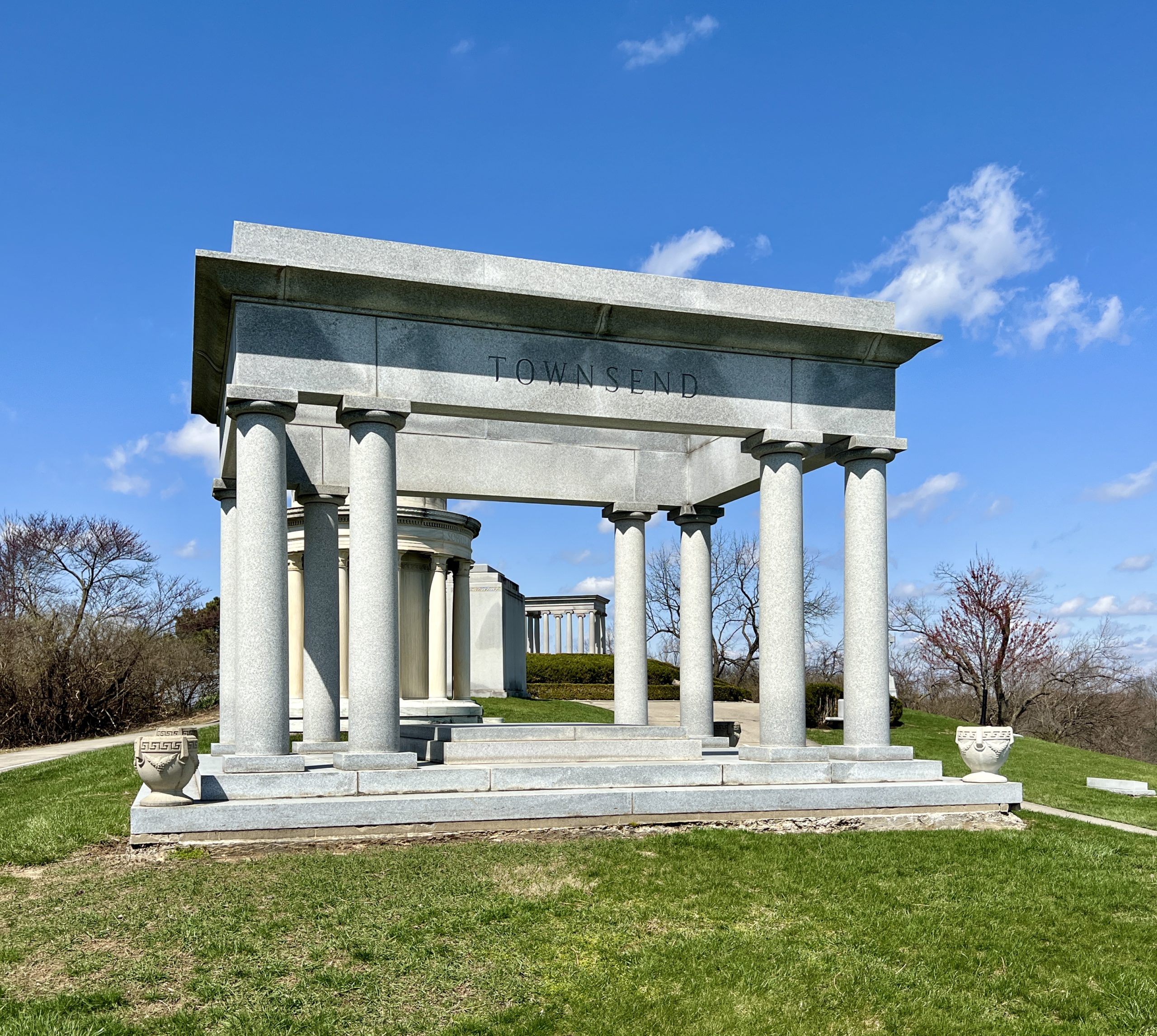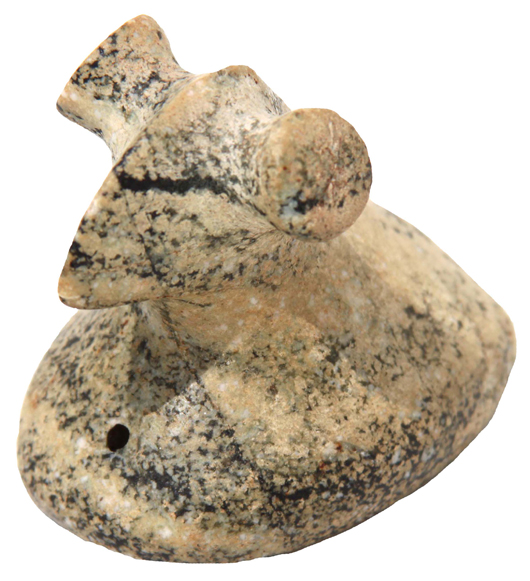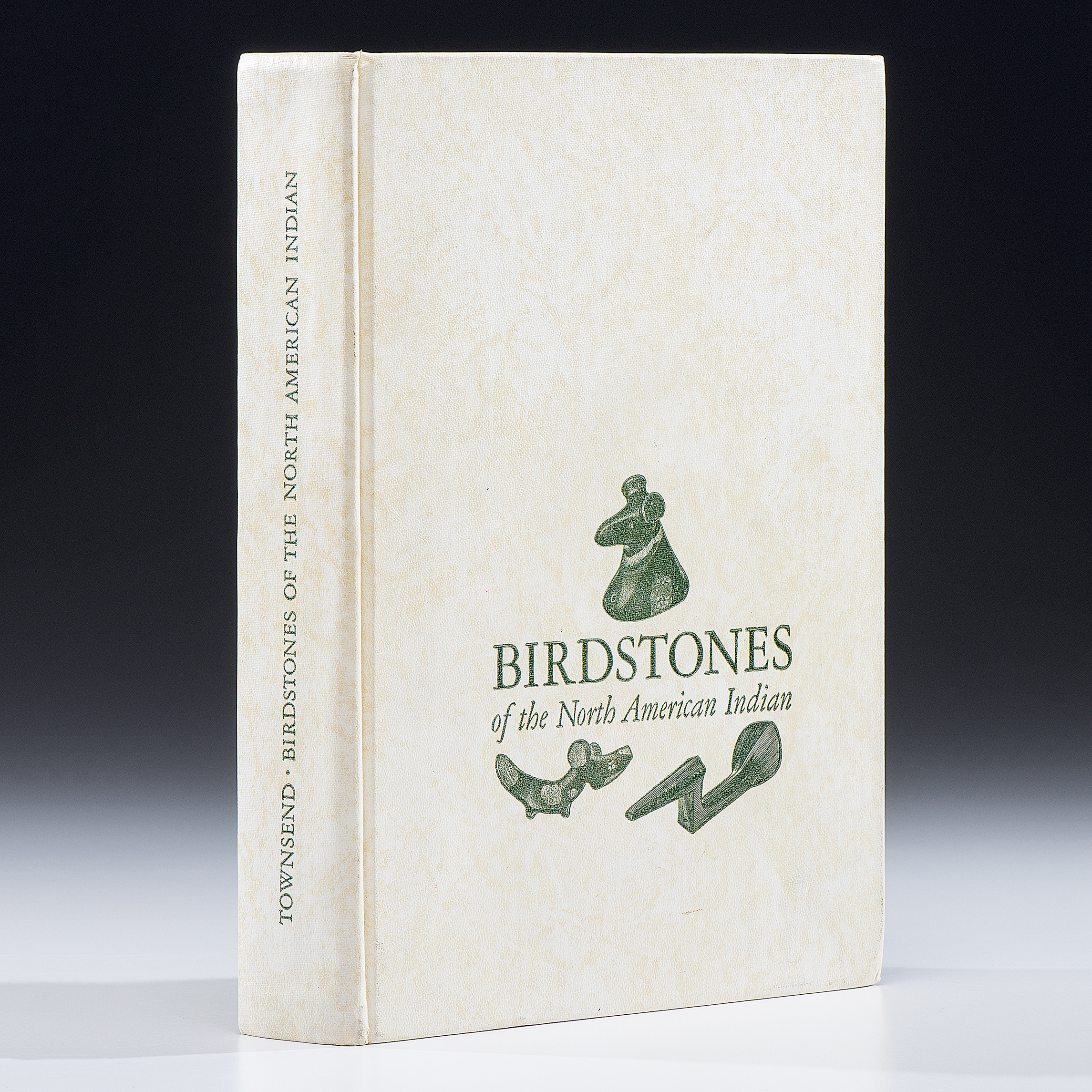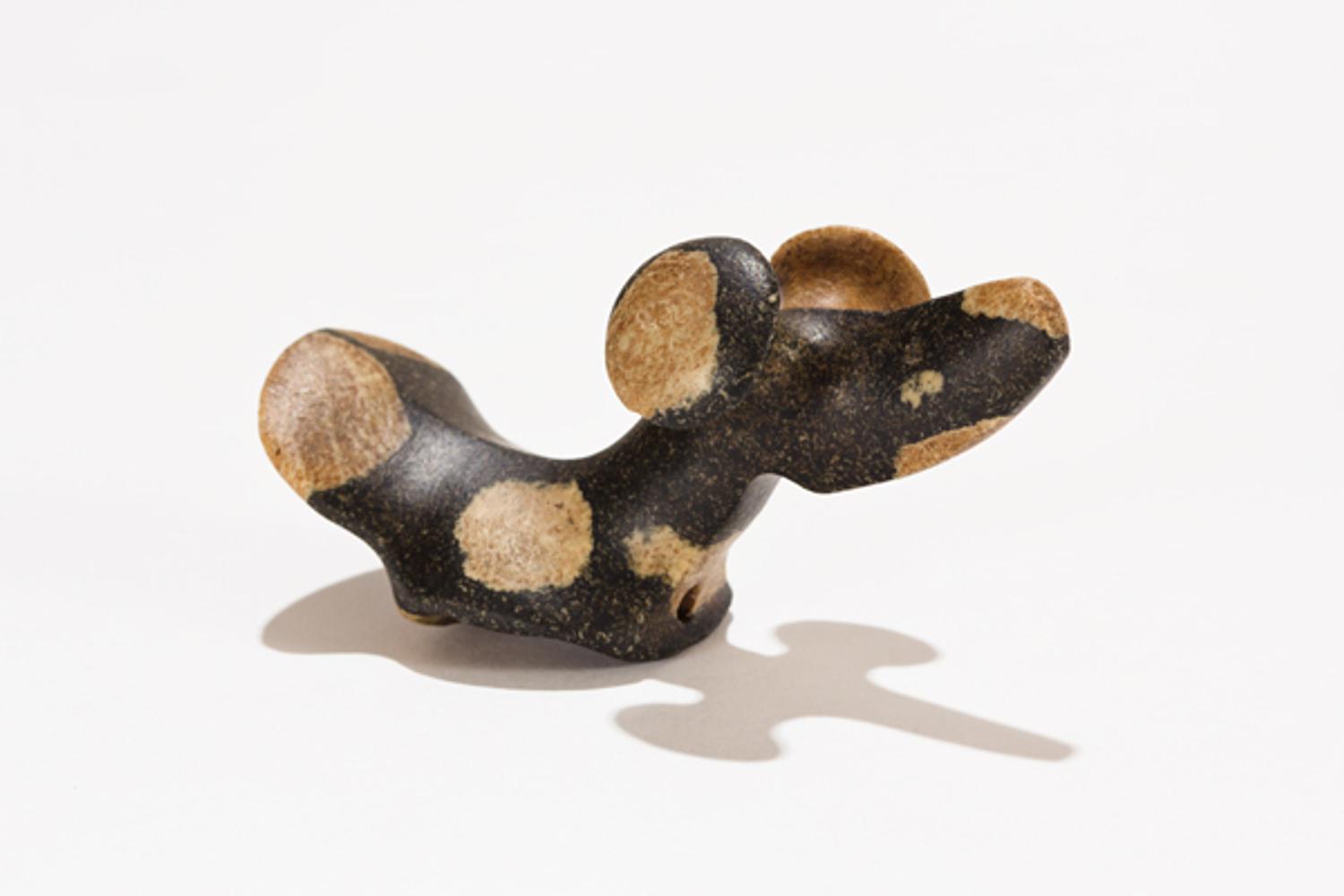Earl Townsend, Jr.
Earl Townsend, Jr.
(11/9/1914 – 8/5/2007)
 Earl Townsend, Jr. is buried just up Crown Hill from Harrison Eiteljorg, with both family lots sharing a commanding view of the Indianapolis skyline. Both men also shared the same deep passion for Native American Art. During his 92 years, Townsend acquired one of the largest and best collections of prehistoric stone Native American artifacts in the world. He wrote a 740-page book about his collection entitled Birdstones of the North American Indian.
Earl Townsend, Jr. is buried just up Crown Hill from Harrison Eiteljorg, with both family lots sharing a commanding view of the Indianapolis skyline. Both men also shared the same deep passion for Native American Art. During his 92 years, Townsend acquired one of the largest and best collections of prehistoric stone Native American artifacts in the world. He wrote a 740-page book about his collection entitled Birdstones of the North American Indian.

Birdstones are rare, sculptured stone objects made by Native Americans thousands of years ago. Birdstone shapes are small and resemble “birds” and are usually drilled for unknown purposes. The exact use of Birdstones remains a mystery, despite many years of speculation and theory. As a result of his passion for Native American artifacts, Townsend was named an honorary chief of the Black River-Swan Creek Saginaw Chippewa Indiana Tribe in 1971.

Over the course of his life, Townsend was also a high school and college basketball star (a 1981 inductee into the Indiana Basketball Hall of Fame), a collector of automobiles and fine art (in addition to his Native American artifacts), the first television announcer for the Indianapolis 500, and a Big Ten basketball referee. He even found a little time to compose and act. His main career, however, was that of a trial lawyer. He and his brother John started their own law firm, Townsend and Townsend, in 1940, and he became a pioneer in the representation of injured people in trial court. He was a member of both the Indiana Bar and the Michigan Bar and represented cases in U.S. District Courts, the U.S. Court of Appeals and the U.S. Supreme Court. He served on many Boards, including both the Indianapolis Museum of Art and the Eiteljorg Museum, and was active in many organizations – legal, civic and social.
On his grave, he is remembered simply as “Beloved Husband and Father” and with these words from the poem “Do Not Stand at My Grave and Weep” by Clare Harner:
“When you awaken in the morning’s hush,
I’m the swift uplifting rush
Of quiet birds in circling flight.”
Location: Section 61, Lot 4; GPS (39.8194027,-86.1772373)
Smithsonian Birdstone Note

Townsend was acknowledged to be the leading authority on these prehistoric North American artifacts.
The highlight of The Townsend Artifact Collection Part II will be The Smithsonian Bird, considered the finest porphyry granite birdstone so far discovered. This specimen is familiar among collectors, who are looking forward to this historic auction event with great anticipation. Discovered prior to 1882 in Vernon County, Wisconsin, The Smithsonian Bird has been widely published, first pictured in Stone Art by Gerald Fowke, Bureau of American Ethnology Annual Report, 1891-92. Its name is derived from the fact that it was once part of the permanent collection at the Smithsonian’s National Museum of the American Indian in Washington, D.C., where Townsend acquired it in 1953, prior to the publication of his landmark book, Birdstones of the North American Indian. The presale estimate for The Smithsonian Bird is $400,000-$600,000.

